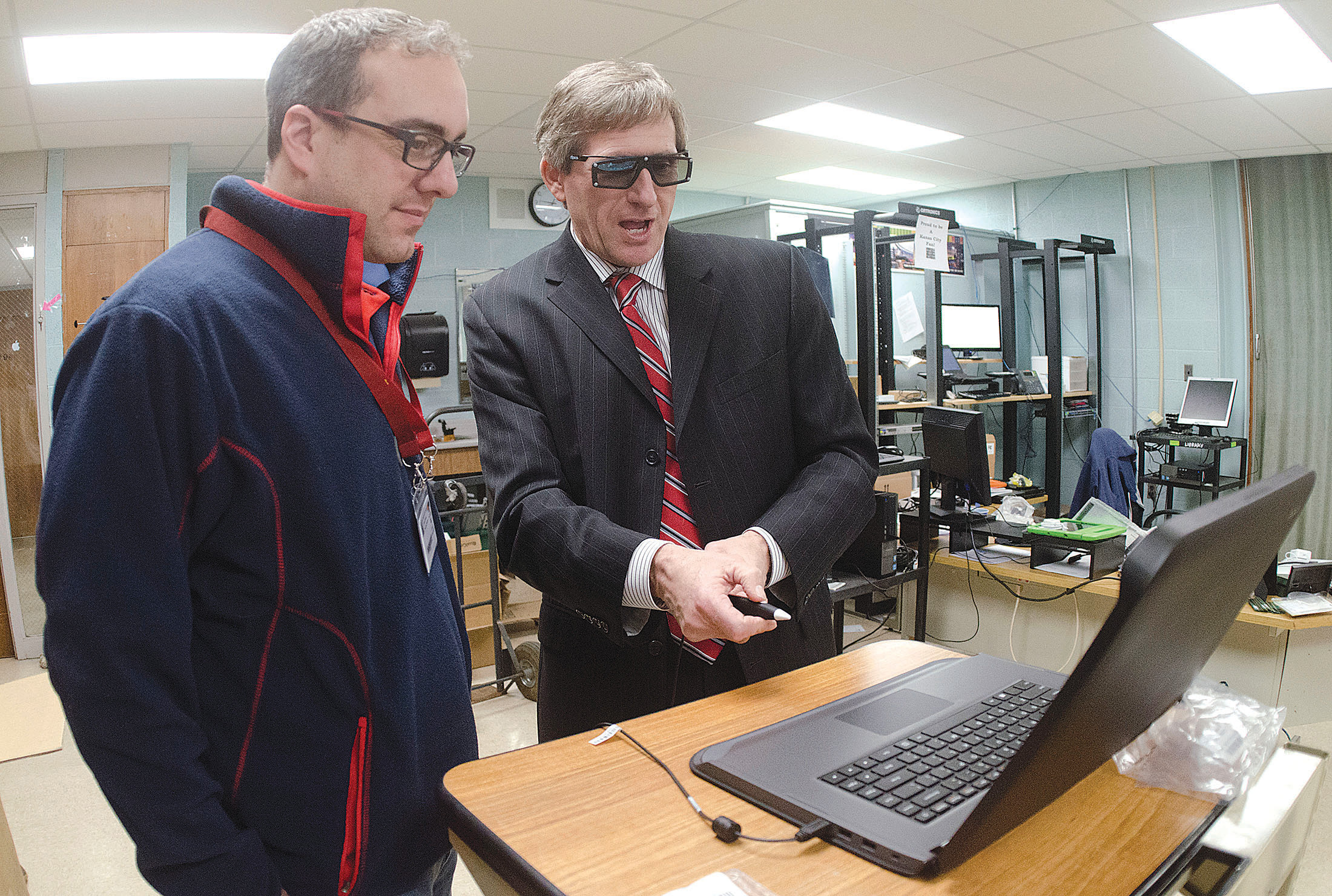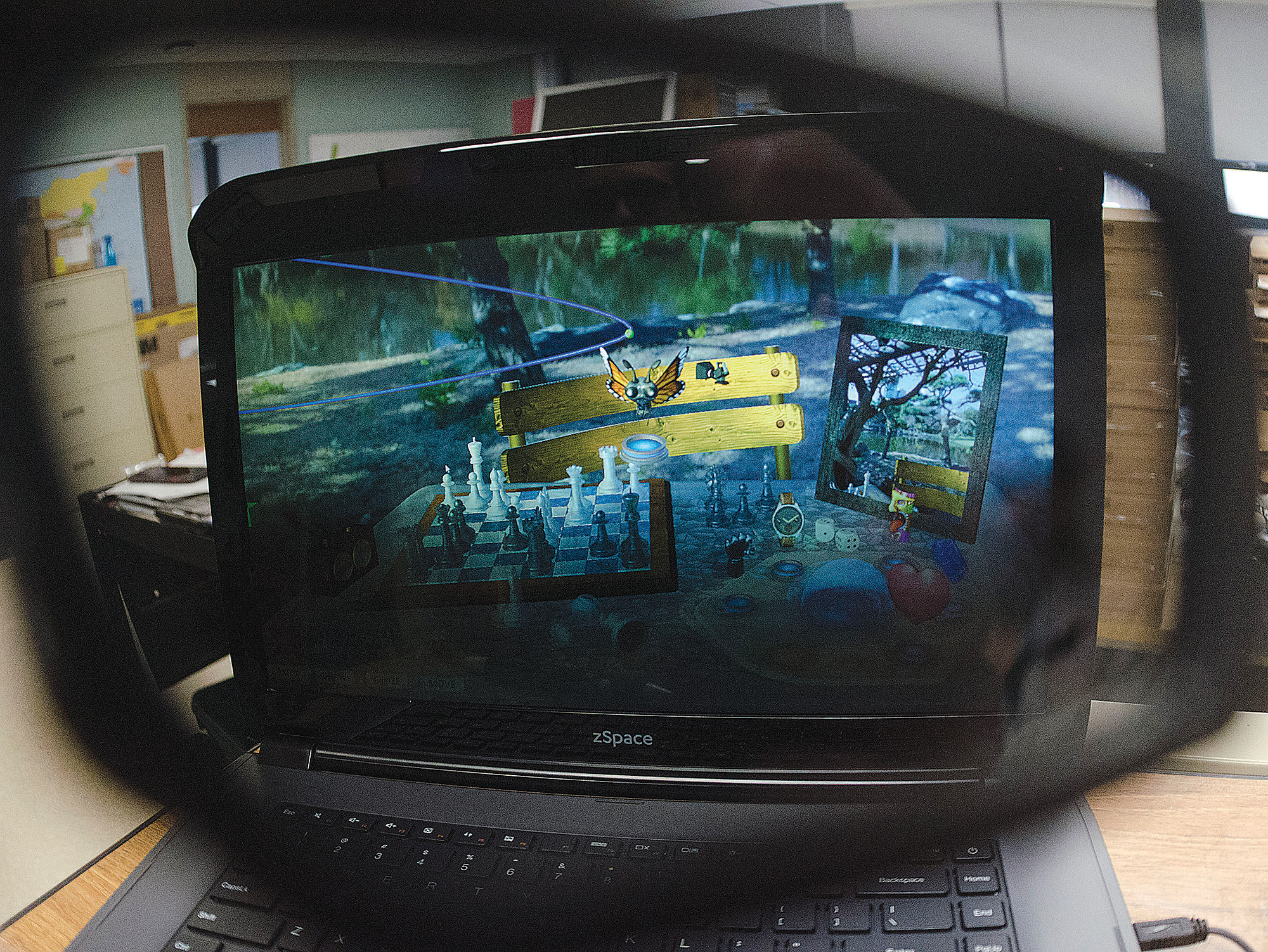Tiverton schools embrace technology in budget
But face two-year legacy of level funding
TIVERTON — With exactly zero members of the public or other elected officials in attendance in the high school library for a Saturday morning kickoff school committee workshop about the school …
This item is available in full to subscribers.
Please log in to continue |
Register to post eventsIf you'd like to post an event to our calendar, you can create a free account by clicking here. Note that free accounts do not have access to our subscriber-only content. |
Day pass subscribers
Are you a day pass subscriber who needs to log in? Click here to continue.
Tiverton schools embrace technology in budget
But face two-year legacy of level funding
TIVERTON — With exactly zero members of the public or other elected officials in attendance in the high school library for a Saturday morning kickoff school committee workshop about the school budget for next fiscal year, School Superintendent Peter Sanchioni laid three budget options on the table for discussion.
He showed options ranging from a 7 percent “treading water” budget to a level-funded “bare bones” budget.
Running through the options thematically is a major budget goal for next year, said Dr. Sanchioni: to "improve student achievement" and increase the school's "capacity for technology."
The three options were contained in a 10-page "FY 20 Budget Presentation" handed out at the meeting. They marked Dr. Sanchioni's formal entry into the first full budget cycle since he took office last June.
The three options, and the assumptions supporting them — especially the emphasis on technology — in good measure formed a backdrop for the morning's three-hour discussion.
The superintendent "is trying to tell us what we need to do," said school committee member Deborah Pallasch, in characterizing the superintendent's presentation.
The three scenarios, have to be seen "in the context of a zero percent budget from the town for the last two years," said School Committee Chairman Dr. Jerome Larkin.
• Option One: The first of the three, would be a 7 percent increase budget of $32.57 million (that Dr. Sanchioni referred to as "treading water"), and would require an additional $2.33 million in overall revenue, an increase in state aid of $772,747 (for a $7.4 million total), and town support in the amount of $1.56 million (a 5.2% increase).
What the town would get from this budget, Dr. Sanchioni said, would be the meeting of all fixed and mandated costs, a increase in faculty and staff of 9.8 FTE staff, and "increases for technology (see below), curriculum, and athletics.
Capital under this option "would need to be funded at a minimum of $456,000," Dr. Sanchioni wrote in his presentation.
• Option Two: The second of the three, would be a 4 percent budget of $31.49 million. It would likely entail, Dr. Sanchioni said, "letting go some of the teachers, could mean cutting programs, and could result in difficulty with scheduling."
It would require an additional $1,.26 million in overall revenue, state aid in the amount of $772,747, and town support in the amount of $482,380 (1.6%).
This budget would "basically cover all fixed and mandated costs," would mean no new staff, would "significantly reduce the the technology, curriculum, and athletic budgets," and would still result in capital needing to be funded "at a minimum of $456,000."
• Option Three: Calling it a "bare bones budget," this would be a "level funded budget" of $31,006,116, Dr. Sanchioni said, and would be "the same as last year's, plus state aid, plus $1 (one dollar) from the town.
"To meet all fixed and mandated costs, with no increases in staff, or expense accounts, we need $31,435,018 (a 3.8% increase)."
"Level funding would result in a $428,902 deficit," he wrote in his presentation. "With expense accounts already reduced to minimum levels, this deficit would need to be absorbed by cuts to personnel."
Capital under this option, wrote Dr. Sanchioni, would still "need to be funded at a minimum of $456,000."
Technology a driver
One of the major expense drivers for next year's budget, accordingly, is technology, for which $320,827 is proposed to be allocated, "to improve student achievement."
Last Friday, the day before the council workshop, Dr. Sanchioni led visitors to the technology lab in the high school to see for themselves what he had in mind.
At one end of the lab were multiple stacks of Chromebooks in their original cardboard boxes. "We're hopeful to go 1 to 1 by the school year 2019-2020. Each student in grades 5 - 12 will have a Chromebook," he said.
Dr. Sanchioni is expansive about the prospect.
"Children come to school, their brains are modified. Neurologists tell us this," he said. "If they're using an iPad at three years old, and come to us when they're six, we've got to learn how to teach them and how to recognize the technology to take them there. We have to meet them at their level. Technology is their language. And if we can embed that in the curriculum, and make them that much more engaged, they can get the facts quicker, and the information quicker. It's less about the content, and more about the skills. The world is open to our kids."
The combined influences of cell phones, tablets, notebooks, video games, and all the other audio and visual realities they experience at a young age, all have educational implications, Dr. Sanchioni says.
"Schools can build on the modifications children's brains are undergoing, by putting technology in the hands of well-trained teachers," he said. "We'll get unprecedented results. The retention level of learning by students is much higher. We're not changing what teachers are teaching or students are learning. We're using technology to augment the instruction."
"With new teaching devices, such as the chrome book," said David Carnevale, the school's technology director, standing in the technology lab., "teaching is more mobile in the classroom. It allows teachers to interact better with the students."
Another device, soon to be operational in about mid-February, is called "Z-space." Similar in appearance to a laptop, a student with a stylus, and special glasses, can manipulate images in three dimensions away from the device (e.g. a butterfly, a frog, a skeleton) and, in the three dimensional reality, interact with it from different perspectives.
The Z-space device (at $1,100 per unit) has applications in the physical sciences, life sciences, earth and space sciences, social sciences, art classes, chemistry and geometry. It is hoped there will be 10 such "Z-space" lab devices for the school year 2019-2020
Plans contemplate 1,000 Chromebooks for students, and 300 for the faculty.











